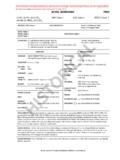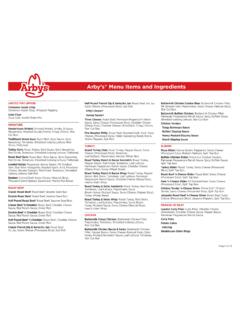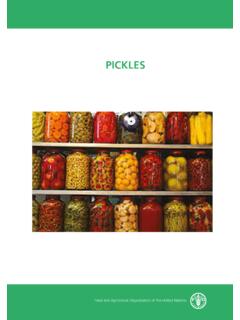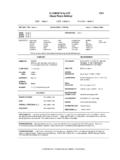Transcription of A p r otoc ol for d e te c ti on of C O V I D -19 u s i n g C R I S …
1 A protocol for detection of COVID-19 using CRISPR diagnostics ( ) Feng Zhang 1,2,3,4,5 , Omar O. Abudayyeh 3 , Jonathan S. Gootenberg 3 ** As we continue to optimize this protocol, we will be uploading updated versions. ** Questions and feedback should be addressed to ( ), ( ), and ( ) ** Groups interested in testing this protocol using patient samples can request guidance by emailing , and a limited number of starter samples of the Cas13 enzyme, crRNA, and lateral flow reporter are available on request ** IMPORTANT NOTE: This protocol should not be used for clinical purposes.
2 We do not have access to patient samples and as a result have not been able to validate this assay using real patient samples. We welcome researchers working with COVID-19 samples to contact us and we can provide a starter kit to test this system on. We hope this protocol will provide some reference points for researchers interested in further advancing this diagnostics system and also welcome researchers to contact us for assistance or guidance. _____ Affiliations: (1) Howard Hughes Medical Institute, Cambridge, MA 02139, USA; (2) Broad Institute of MIT and Harvard, Cambridge, MA 02142, USA; (3) McGovern Institute for Brain Research at MIT; (4) Department of Brain and Cognitive Sciences, (5) Department of Biological Engineering, Massachusetts Institute of Technology, Cambridge, MA 02139, USA Acknowledgements: We would like to thank Richard Shan of Quintara for assistance with oligo synthesis and Kevin Holden of Synthego for crRNA synthesis.
3 We would like to acknowledge support from the McGovern Institute, NIH (1R01- MH110049 and 1DP1-HL141201 grants); the Howard Hughes Medical Institute; the Poitras Center for Affective Disorders Research at MIT; Open Philanthropy Project; James and Patricia Poitras; and Robert Metcalfe. Declaration of conflicts of interest: , , and are inventors on patents related to Cas13, SHERLOCK, and CRISPR diagnostics, and are co-founders, scientific advisors, and hold equity interests in Sherlock Biosciences, Inc. A. Overview The recent outbreak of the novel coronavirus COVID-19 can be diagnosed using qPCR, but inadequate access to reagents and equipment has slowed disease detection.
4 To help advance the diagnosis of COVID-19, we describe here a protocol for using the CRISPR-based SHERLOCK ( S pecific H igh S ensitivity E nzymatic R eporter Un LOCK ing) technique for the detection of COVID-19. Using synthetic COVID-19 virus RNA fragments, we have been able to consistently detect COVID-19 target sequences in a range between 20 and 200 aM (10-100 copies per microliter of input). The test can be carried out starting with RNA purified from patient samples, as is used for qRT-PCR assays, and can be read out using a dipstick in less than an hour, without requiring elaborate instrumentation.
5 The SHERLOCK COVID-19 detection protocol works in three steps and can be completed in 1 hour, starting from nucleic acid extraction as used for qRT-PCR tests. Step (1) 25 min incubation isothermal amplification of the extracted nucleic acid sample using a commercially available recombinase polymerase amplification (RPA) kit; Step (2) 30 min incubation detection of pre-amplified viral RNA sequence using Cas13; Step (3) 2 min incubation visual read out of the detection result by eye using a commercially-available paper dipstick. The following sections detail the required reagents as well as procedure.
6 B. Assay Specifications To check for the presence of COVID-19 RNA in nucleic acid extractions of specimens, two targets were chosen in the COVID-19 genome from the S gene and Orf1ab gene. RPA amplification primers and LwaCas13a CRISPR guide RNAs were designed for specific detection. In order to maximize the specificity of the assay, we selected guide sequences that minimized off-targets to related human respiratory virus genomes. Using serial dilutions of synthetic COVID-19 S gene and Orf1ab gene RNA fragments, we were able to detect the presence of synthetic COVID-19 RNA sequence in a range between 10-100 copies per microliter.
7 Below are example images of the lateral flow readout for different input concentrations: ( ) Page 2 of 8 C. Materials and Reagents Specimen and nucleic acid extraction: The patient sample should be collected according to the appropriate biosafety procedures. Please reference the 2020 CDC COVID-19 test protocol for details on specimen collection and subsequent nucleic acid extraction. The input for this protocol, beginning with Step (1), can be the same extracted nucleic acid as used in qRT-PCR assays. Reagents: For Step (1) isothermal amplification: -TwistAmp Basic ( TABAS03 KIT ), TwistDx Limited -ProtoScript II Reverse Transcriptase ( M0368L ), New England BioLabs -RPA Amplification primer pair targeting S gene (S-RPA-Forward_v1: 5 -GAAATTAATACGACTCACTATAGGGAGGTTTCAAACTTT ACTTGCTTTACATAGA-3 ; S-RPA-Reverse_v1: 5 -TCCTAGGTTGAAGATAACCCACATAATAAG-3 ), can be ordered from IDT -RPA Amplification primer pair targeting Orf1ab (Orf1ab-RPA-Forward_v1: 5 - GAAATTAATACGACTCACTATAGGGCGAAGTTGTAGGAGA CATTATACTTAAACC-3.)
8 Orf1ab-RPA-Reverse_v1: 5 -TAGTAAGACTAGAATTGTCTACATAAGCAGC-3 ) , can be ordered from IDT ( ) Page 3 of 8 For Step (2) detection of virus RNA using Cas13: -Cleavage buffer (400mM Tris pH in ddH2O). Prepared using 1M Tris pH stock solution from Sigma Aldrich ( T2194-100ML ) -SUPERase In RNase Inhibitor ( AM2694 ), ThermoFisher Scientific -NxGen T7 RNA Polymerase ( 30223-1 ), Lucigen -Ribonucleotide Solution Set ( N0450S ), New England BioLabs -Magnesium chloride solution ( 63069-100ML ), Sigma Aldrich -Storage Buffer for diluting Cas13 protein stock (combine mL of 1M Tris pH , 6 mL of 5M NaCl, mL of glycerol, and 100 L of 1M DTT, and mL ddH2O) -LwaCas13a protein purified according to Kellner et al.
9 , Nature Protocols 2019 , stored as 4ul aliquots at 2mg/mL. -LwaCas13a crRNA for detecting S gene (S-crRNA_v1: 5 - GAUUUAGACUACCCCAAAAACGAAGGGGACUAAAACGCAG CACCAGCUGUCCAACCUGAAGAAG-3 ), can be ordered from Synthego -LwaCas13a crRNA for detecting Orf1ab gene (Orf1ab-crRNA_v1: 5 -GAUUUAGACUACCCCAAAAACGAAGGGGACUAAAACCCA ACCUCUUCUGUAAUUUUUAAACUAU-3 ), can be ordered from Synthego -Reporter RNA for lateral flow read out (Lateral-Flow-Reporter: 5 -/56-FAM/mArArUrGrGrCmAmArArUrGrGrCmA/3 Bio/-3 ), can be o rdered from IDT For Step (3) reading out using lateral flow dipstick.
10 -HybriDetect Dipstick ( MGHD 1 ), Milenia Biotec GmbH Positive control sequences (can be produced using T7 transcription from synthesized DNA oligos): -S gene fragment: 5 -UAACAUCACUAGGUUUCAAACUUUACUUGCUUUACAUAG AAGUUAUUUGACUCCUGGUGAUUCUUCUUCAGGUUGGACA GCUGGUGCUGCAGCUUAUUAUGUGGGUUAUCUUCAACCUA GGACUUUUCUAUUAAAAUAUAAUGAAAAUGGAACCAUUAC AGAUGCUGUAGACUGUGC-3 -Orf1ab gene fragment: 5 -UGAGUGUAAUGUGAAAACUACCGAAGUUGUAGGAGACAU UAUACUUAAACCAGCAAAUAAUAGUUUAAAAAUUACAGAA GAGGUUGGCCACACAGAUCUAAUGGCUGCUUAUGUAGACA AUUCUAGUCUUACUAUUAAGAAACCUAAUGAAUUAUCUAG -3 ( ) Page 4 of 8 Equipment: -37C water bath -42C water bath -Microcentrifuge for spinning down test tubes D.







